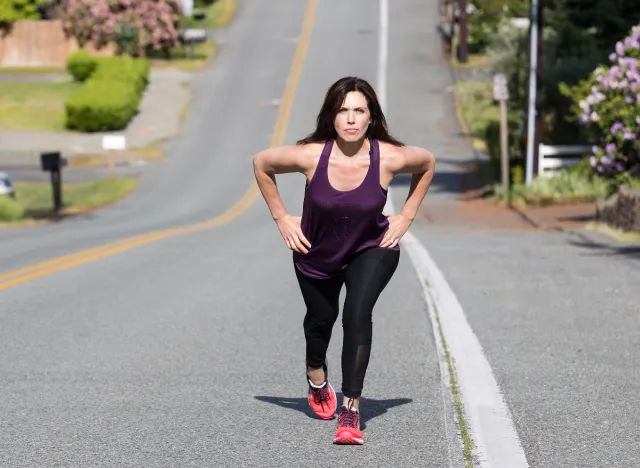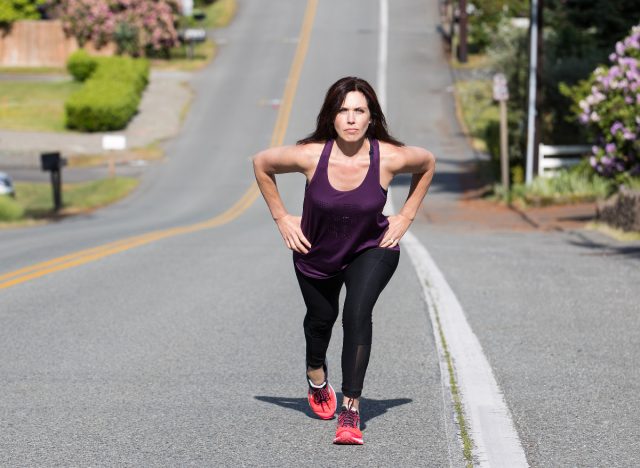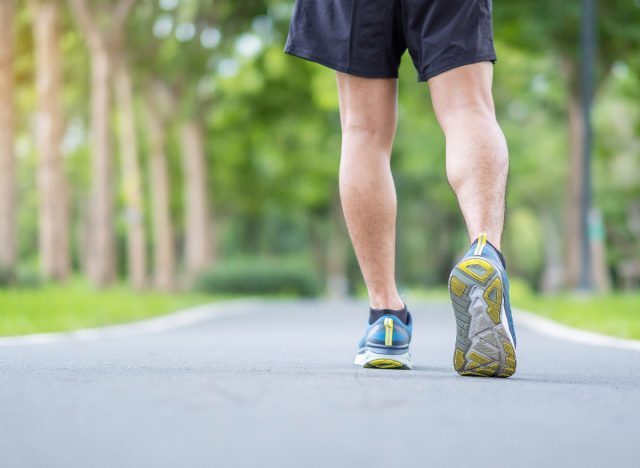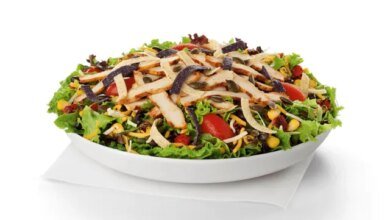The #1 Walking Workout for Weight Loss

In a world where high-intensity workouts and fad diets dominate the fitness landscape, it’s easy to overlook the simplicity and effectiveness of walking for weight loss. With so many complex fitness routines promising quick results, the humble act of walking often gets sidelined. However, this low-impact activity, which you can do anywhere without needing special equipment, can be a game-changer for those seeking a sustainable, enjoyable, and effective way to shed pounds. That’s why I’ve curated my #1 walking workout for weight loss that’ll transform your cardio routine.
Whether you aim to lose weight, improve your cardiovascular health, or incorporate more movement into your daily routine, walking offers many benefits without the intensity of more strenuous workouts. Allow me to guide you through the myriad benefits of walking for weight loss, delve into different walking workouts, and present a structured plan to help you maximize your results. By the end, you’ll have all the tools to make walking a pivotal part of your fitness journey.
The Benefits of Walking for Weight Loss

Walking is one of the most underrated exercises for weight loss. It’s low-impact, suitable for people of all fitness levels, and incredibly effective at boosting your metabolism.
When you walk briskly, your body burns calories more efficiently, helping to create the calorie deficit needed for weight loss. Moreover, walking is easier on the joints than running or high-intensity interval training (HIIT), reducing the risk of injury while delivering excellent cardiovascular benefits.
Cardio exercises like walking increase your heart rate, boosting your metabolism. This metabolic boost helps you burn calories during the walk and keeps your metabolism elevated for hours afterward.
Additionally, walking can help improve your mood and energy levels, making staying motivated and consistent with your weight-loss efforts more manageable. Walking releases endorphins, which are natural mood lifters, helping to reduce stress and anxiety. The release of endorphins can lead to better sleep and overall mental well-being, creating a positive feedback loop that supports your weight loss journey.
Plus, it’s an activity you can easily incorporate into your daily routine, whether a morning stroll, a lunchtime walk, or an evening hike. Walking doesn’t require a gym membership or fancy equipment—just a good pair of shoes and a bit of determination.
You can walk alone, with a friend, or while listening to your favorite podcast or audiobook. This versatility makes it easy to stick with and integrate into even the busiest schedules.
Walking can transform your approach to fitness and weight loss, whether you’re exploring new trails or just looping around your neighborhood.
Different Types of Walking Workouts

Walking workouts aren’t one-size-fits-all; there are various styles you can incorporate to keep things exciting and effective. Let’s explore some popular types of walking workouts and their benefits. The variety ensures you’ll always be energized and have new challenges to look forward to.
1. Steady-State Walking
This involves maintaining a consistent pace for a set period. It’s excellent for building endurance and can be done anywhere. Whether you’re taking a 30-minute walk around your neighborhood or a long walk in the park, steady-state walking is easy.
2. Interval Walking
Interval walking involves alternating between periods of fast walking and slower, recovery-paced walking. It is a fantastic way to increase calorie burn. The variation in intensity keeps your body guessing, which can enhance metabolism and improve cardiovascular fitness.
3. Rucking
This form of walking includes carrying a weighted backpack. It adds resistance to your workout, increasing the intensity and calorie burn. Rucking is beneficial for building strength and endurance, making your walks more challenging and rewarding.
4. Hiking
If you can access trails, hiking is a wonderful way to enjoy the great outdoors while getting a robust workout. The varied terrain engages different muscle groups, and the natural beauty can make the exercise feel less like a chore and more like an adventure.
The Best Walking Workout for Weight Loss

Now that we’ve covered the benefits and types of walking workouts, let’s explore the most effective one designed to maximize weight loss. This workout combines steady-state and interval walking elements to keep your body challenged and your metabolism revived.
Workout Breakdown:
- Total Duration: 40 minutes
- Intensity: Varies between moderate and high intensity, keeping your body challenged and your metabolism high
Warm Up (5 minutes):
- Start with a gentle walk at a relaxed pace to warm up your muscles and slightly elevate your heart rate.
Main Workout (30 minutes)—Intervals:
- Minutes 1-4: Walk briskly at a pace where you can still talk but are slightly breathless.
- Minute 5: Power walk at a pace where talking is challenging.
- Repeat this 5-minute interval cycle six times.
Cool Down (5 minutes):
- Finish with a slow, relaxed walk to help your heart rate and breathing return to normal.
This workout is efficient and effective, fitting into your daily routine while delivering maximum benefits. Combining brisk walking and power walking intervals boosts calorie burn and enhances cardiovascular fitness. Stay hydrated, wear comfortable shoes, and listen to your body. By consistently incorporating this walking workout into your routine, you’ll be well on your way to achieving your weight-loss goals.
Jarrod Nobbe, MA, CSCS





